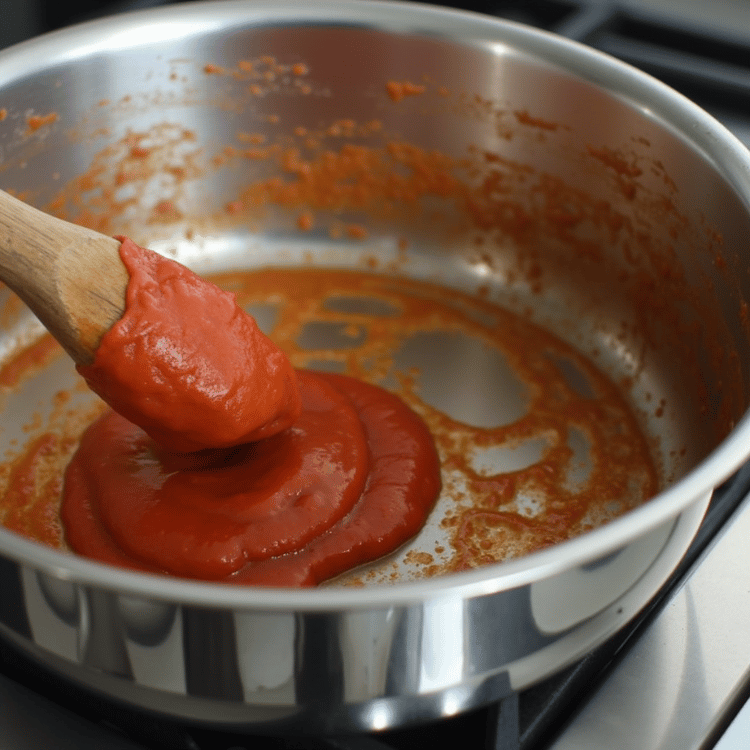Easy Homemade Guava Paste Recipe
Table of Contents
Have you ever tasted something so sweet and tangy that it felt like sunshine on your tongue? That’s guava paste for you! Whether you’ve enjoyed it paired with cheese or baked into flaky pastries, this tropical treat is a must-have in any kitchen. And guess what? Making guava paste at home is easier than you think. Let’s dive into this easy homemade guava paste recipe and create something magical together.
Ingredients

Before we start, let’s gather the essentials. Here’s what you need:
| Ingredient | Quantity |
|---|---|
| Ripe guavas | 2 pounds (about 1 kg) |
| Sugar | 2 cups (400 grams) |
| Lime juice (optional) | 1 tablespoon |
| Water | 1 cup (250 ml) |
Instructions
Are you ready to turn those ripe guavas into something extraordinary? Follow these simple steps:
Step 1: Preparing the Guavas
- Start by washing the guavas thoroughly under running water. Guavas can carry dirt and residue on their skin, so it’s important to clean them well. Next, cut the guavas into small chunks, removing the stem ends. If you’re feeling adventurous, you can leave the skin on for added flavor, but it’s entirely up to you.
Step 2: Cooking the Guavas
- Place the guava chunks into a medium-sized pot and add 1 cup of water. Set the pot over medium heat and bring the mixture to a simmer. Stir occasionally to prevent the guavas from sticking to the bottom. After about 20 minutes, the guavas should be soft and mushy. This is when the magic starts!
Step 3: Straining the Mixture
- Once the guavas are cooked, let them cool slightly. Then, use a strainer or sieve to separate the seeds and skins from the pulp. This step can take a bit of effort, but the smooth guava puree you’ll get is well worth it.
Step 4: Adding Sweeteners and Finishing
- Return the guava puree to the pot and add 2 cups of sugar. If you like a hint of tanginess, now’s the time to add a tablespoon of lime juice. Stir everything together over low heat. As the mixture cooks, it will thicken and darken in color. Keep stirring to avoid burning. After about 30–40 minutes, the paste will pull away from the sides of the pot. That’s your sign that it’s done!
Creative Uses for Guava Paste
Now that you have a batch of homemade guava paste, the possibilities are endless. Here are some creative ways to enjoy it:
- Pair it with Cheese: Guava paste pairs beautifully with creamy cheeses like cream cheese or Manchego. Slice it and serve as part of a cheese platter.
- Use it in Desserts: Guava paste is a classic filling for empanadas, turnovers, and cookies. You can also melt it down to glaze cakes.
- Spread it on Toast: Start your day with a slice of toast topped with guava paste and butter. It’s like sunshine in every bite.
- Add it to Sauces: Melt guava paste and use it as a glaze for meats like pork or chicken. The sweet and tangy flavor elevates savory dishes.
Tips for Perfect Guava Paste Every Time
Making guava paste isn’t complicated, but these tips will ensure success:
- Choose the Right Guavas: Look for ripe guavas that are slightly soft to the touch. Overripe guavas work well, too, as they’re sweeter and easier to cook.
- Stir Constantly: As the paste thickens, it’s prone to sticking to the pot. Keep stirring to prevent burning.
- Store Properly: Once cooled, store your guava paste in an airtight container. It can last up to two weeks in the fridge or even longer in the freezer.
- Experiment with Sweetness: If you prefer less sugar, adjust the amount to suit your taste. Just note that sugar helps preserve the paste.
Why Make Guava Paste at Home?
You might wonder, why bother making guava paste when you can buy it at the store? The answer is simple: homemade guava paste is fresher, tastier, and customizable. Here are some great reasons to make it at home:
- Cost-Effectiveness: Store-bought guava paste can be pricey, but making it yourself costs just a fraction of the price.
- Control Over Ingredients: You decide how sweet or tangy it is. Plus, there are no added preservatives or artificial flavors.
- Sustainability: Using fresh guavas reduces waste and packaging. It’s a win for the environment!
- Fun Activity: Making guava paste is a fun and rewarding activity to do with family or friends. It’s like a science experiment that ends with a sweet treat.
Troubleshooting Common Issues
Sometimes, things don’t go as planned. Here are some quick fixes for common guava paste issues:
- Paste Too Runny: Cook it a bit longer until it thickens. If it’s still not setting, you can add a small amount of pectin.
- Paste Too Thick: If your paste hardens too much, reheat it with a splash of water to loosen it up.
- Burnt Paste: Always use low heat and stir constantly to prevent burning. If it burns slightly, transfer the unburned portion to a new pot.
Conclusion
And there you have it—an easy homemade guava paste recipe that’s sweet, tangy, and completely irresistible. Making guava paste at home lets you enjoy this tropical delight in its freshest, most flavorful form. Whether you’re spreading it on toast, baking it into desserts, or pairing it with cheese, you’re bound to love every bite.
So, what are you waiting for? Head to your kitchen, grab some guavas, and start creating your own batch of guava paste. And don’t forget to share your experience in the comments. What’s your favorite way to enjoy guava paste? I can’t wait to hear from you!


